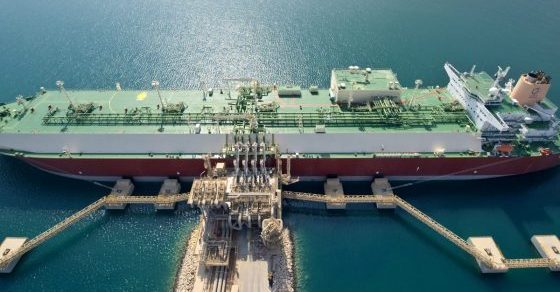Analysts say the project is expected to generate revenue of $40 billion upon the completion of the first part by 2025.
Qatar can now implement the first phase of the North Field Expansion project after announcing all project partners at the North Field East (NFE), the Gulf state’s news agency (QNA) reported on Tuesday.
Experts told QNA that the agreements QatarEnergy reached with the previous companies for the first phase paves the way for the announcement of companies for the second phase by 2023.
Under the first phase, Qatar is raising its production of liquified natural gas (LNG) from 77 million tonnes to 110 million tonnes by 2025, representing a 43% increase. The second part of the project, the biggest of its kind, will ramp up Qatar’s LNG production to 126 million tonnes by 2027.
QatarEnergy concluded the signing of contracts with five global companies for the $28.75 billion NFE project. The companies include Shell, ExxonMobil, ConocoPhillips, Eni, and TotalEnergies – the first to be announced.
QatarEnergy began looking into potential partners in 2019, with production expected to start before the end of 2025.
Economist Nasser Al Khalidi told QNA that the timing of the announcement of the companies comes at a critical time in the energy sector, with gas prices rising in light of the ongoing war between Russia and Ukraine.
Al Khalidi said the market will gradually balance itself and the project will open up opportunities for further investments in various local sectors, given it will increase Qatar’s budget revenues.
QNA noted that the project is expected to generate revenue of $40 billion upon the completion of the first part by 2025.
Discovered in 1971, the North Field covers an area of 9,700 square kilometers, of which 6,000 square kilometers are in Qatar’s territorial waters. The production then started in 1989, during the time in which oil was the primary source for Qatar’s wealth.
Since the discovery of natural gas, Qatar’s proven reserves witnessed a steady increase from 2,265 billion cubic meters in 1981 to 8,500 billion cubic meters in 1996. The country witnessed a major milestone in 2010, when its production of LNG reached 77 million tonnes per annum, making it the world’s largest LNG producer.
The use of LNG falls in line with the Paris agreement, which aims to limit global warming through the reduction of emissions.
Qatar has also announced the national Climate Change Action Plan in 2021 to reduce around 25% of its greenhouse gas emissions by 2030, which falls in line under Qatar’s National Vision 2030.







